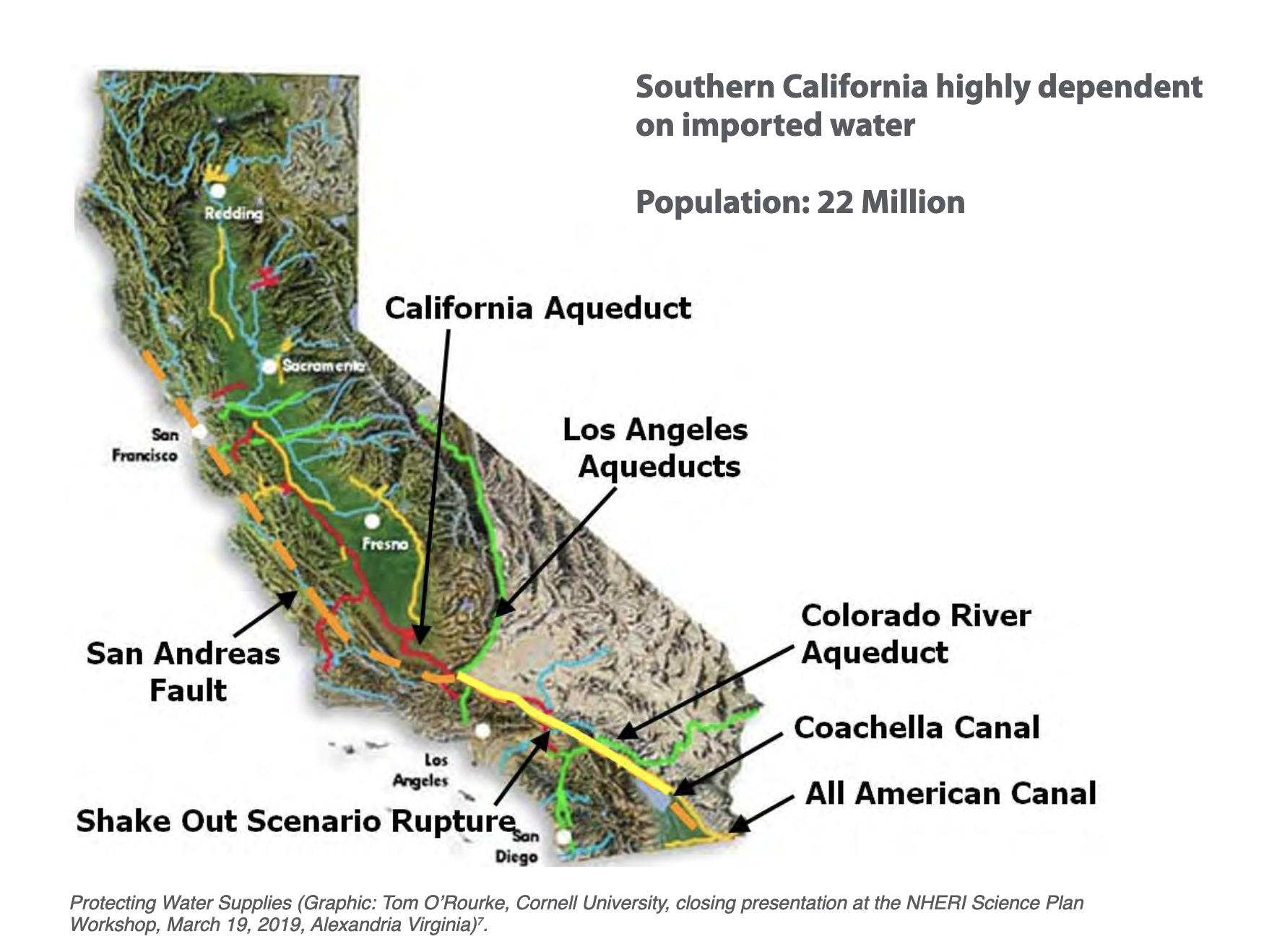NHERI Science Plan: Resilience of Lifeline Systems
Published on July 26, 2021
The NHERI Science Plan includes several key research challenges that are important for natural hazards engineers to address. One of these challenges is lifeline systems resilience.
Lifeline systems are key infrastructure elements. Lifeline failures can prevent people from returning to their homes and cause businesses to relocate after a natural hazard event.
For example, there are more than 7,000 km of cast-iron main water pipes in Los Angeles. Their level of performance and vulnerability against a natural hazard event is unknown, but their performance in strong ground-shaking from earthquakes is thought to be poor. What is needed is to develop the science and engineering tools to identify the weaknesses in the system, to replace or upgrade the components so the network can perform at the level expected, and to develop strategies to ensure that the system is resilient and recovers quickly after damage or failure.
Fortunately, all lifeline networks have similar problems. Thus, lessons learned and solutions proposed for one of the networks, such as the Los Angeles water main system, can be used for other lifeline systems such as power, gas and waste systems.
READ MORE about lifeline resilience in the NHERI Science Plan.






